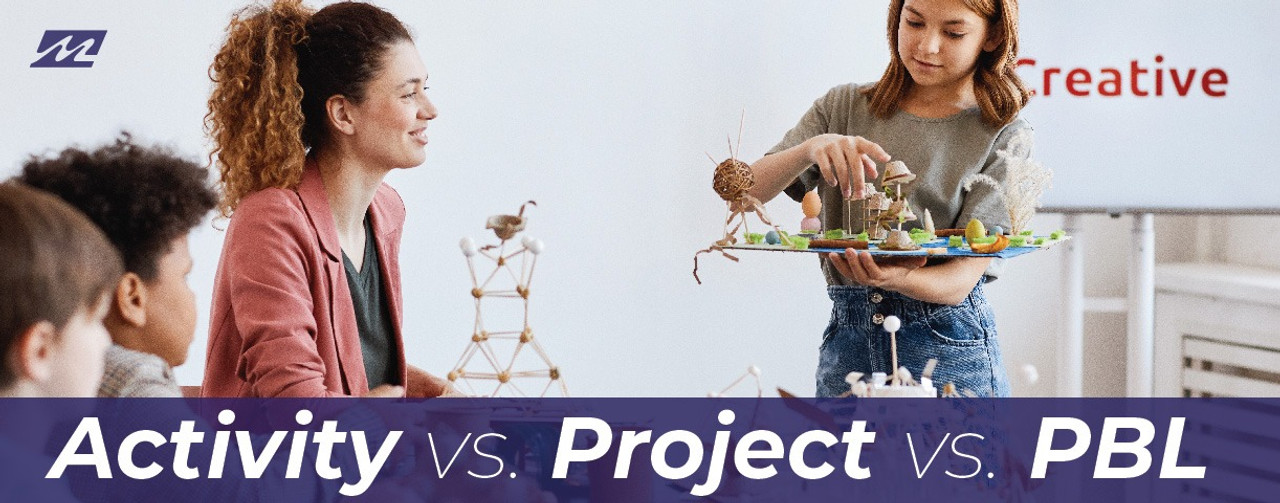Getting kids actively involved in their education is a key factor in their academic success and in-class satisfaction. Hands-on assignments help them practice what they’re learning, and suits learners who aren’t engaged by reading and writing assignments. There are countless strategies for hands-on teaching, and each has their own pros, cons, and best use cases. Some strategies may serve similar purposes, which can make it difficult to understand the differences and when it’s best to use them. This guide explains three popular teaching strategies, the ways they’re similar and different, and why a balance of all three builds a strong classroom.
Activity
An activity is when every student is doing the exact same thing and following step-by-step instructions to achieve the same end result. Although commonly found in homework assignments such as chemistry and math, this can also be applied to hands-on assignments. Lab experiments in science classes, cooking demonstrations in FCS courses, and formatting documents in a typing or computer literacy program would all be considered activities. Ultimately, these activities are graded based on how close the student was to producing the intended end result.
Project
A project is when students are guided to create basically the same thing, following the same specifications and constraints, but are encouraged and expected to add their own personal twist to the assignment. Although similar to an activity because each student is following the same set of rules, a project is different in that the end result is meant to be personalized by each student. For example, CO2 dragsters or bridge building structures in an industrial technology class, or paintings and ceramics pieces in an art class would all be considered projects. Students are graded based on how well they’ve executed an understanding of the topics they’ve been learning while staying within the project’s specifications.
PBL
In project-based learning (PBL), students are presented with a topic or prompt question and asked to create a solution which engages them in meaningful and thoughtful work. Similar to a project or activity, each student is provided with the same instructions or constraints, though PBL differs in that the final results all take different forms. Some students might write a short book or screenplay to explain their ideas, while others program a computer game or create a performance piece. In the end, all the projects will be different, but the prompt will be the same. Students will be graded based on how well they’ve demonstrated their knowledge and understanding of the provided topic.
Why Use These 3 Teaching Strategies?
All three of these teaching strategies are important in the STEAM or general education classroom at different times. Students need to practice completing assignments with a strict set of rules, as well as ones that are more open to interpretation. Having diversity in your teaching methods helps students who learn in different ways to still grasp the concepts they need to know for a successful future. As an adult, you know that not every day at work and home looks the same, so we need to help students understand and prepare for that through a variety of teaching strategies.

